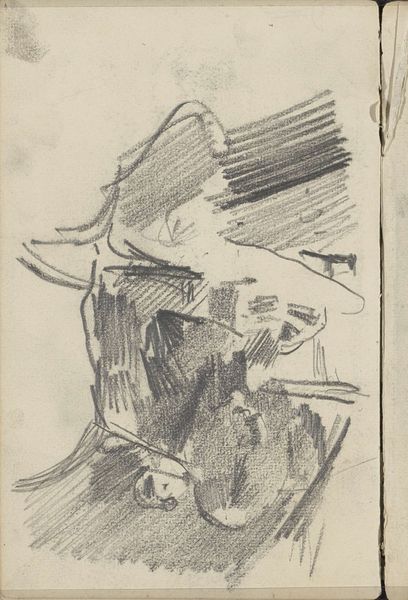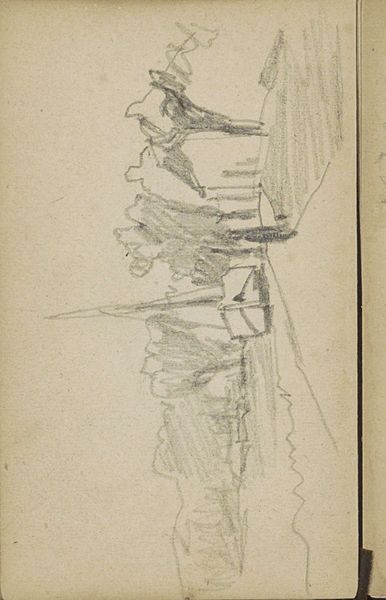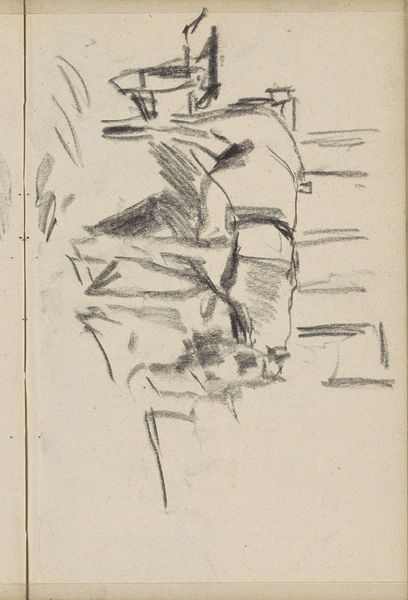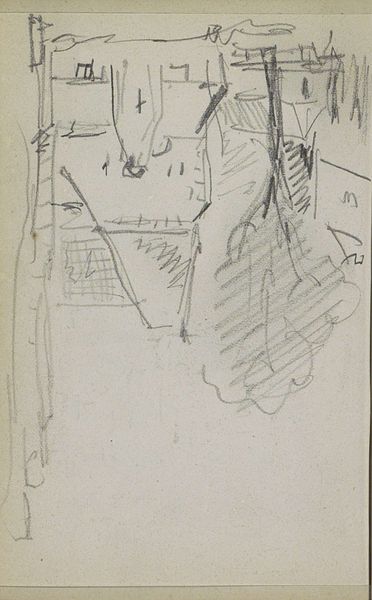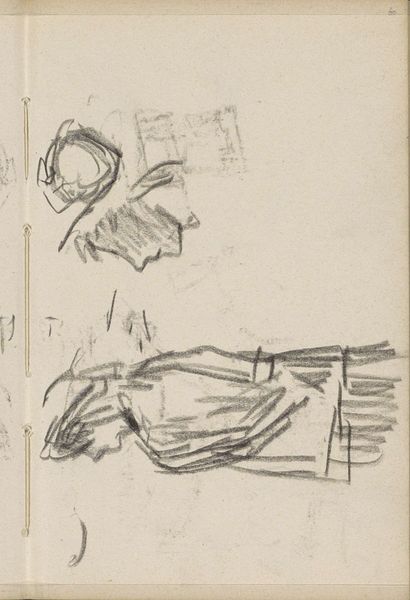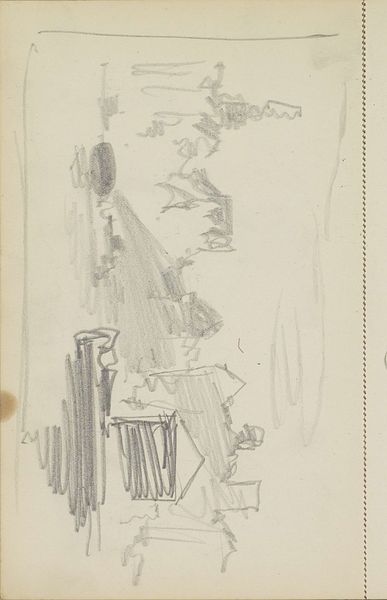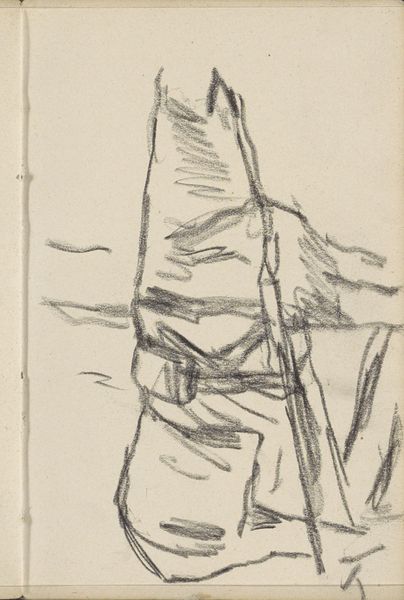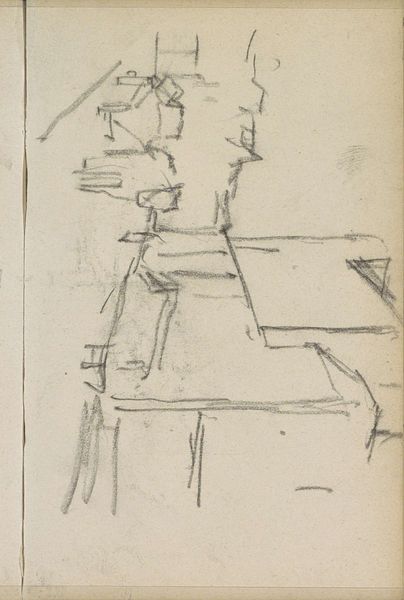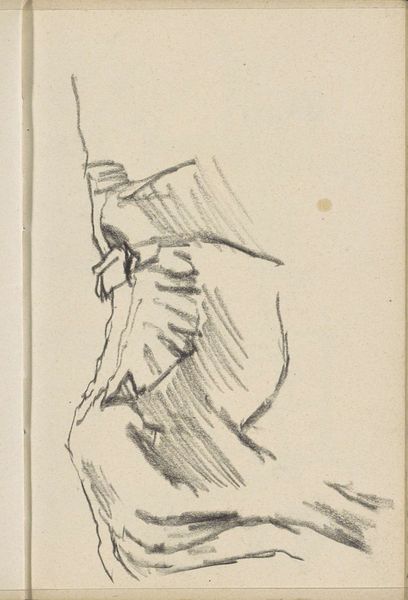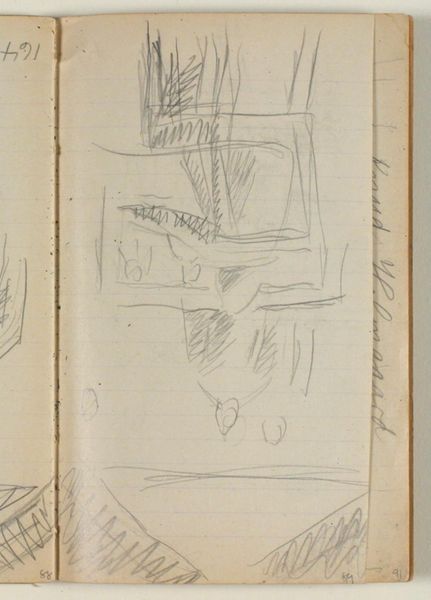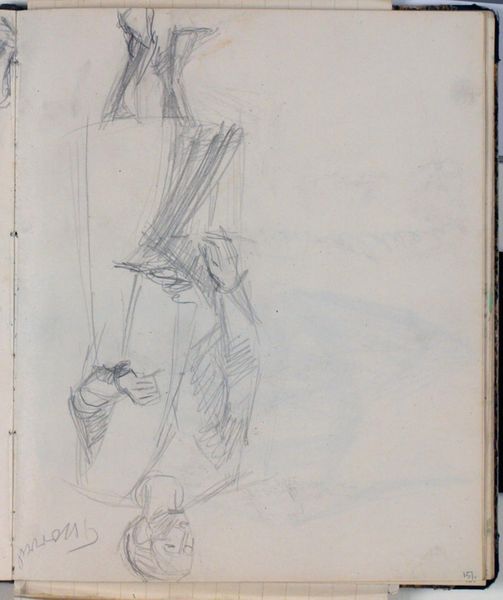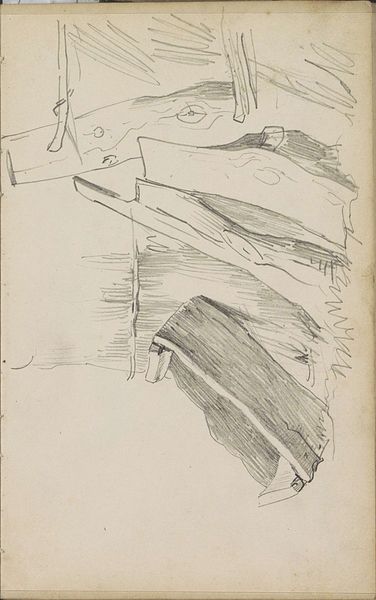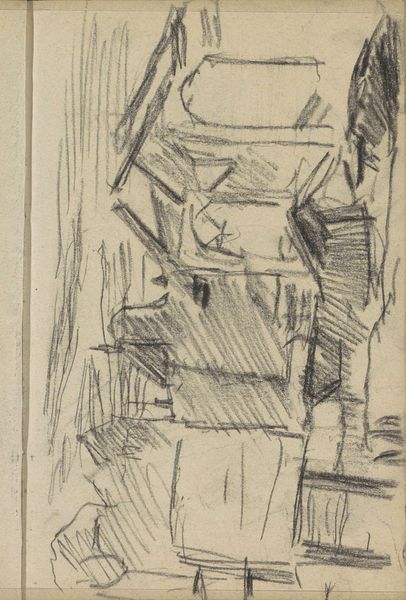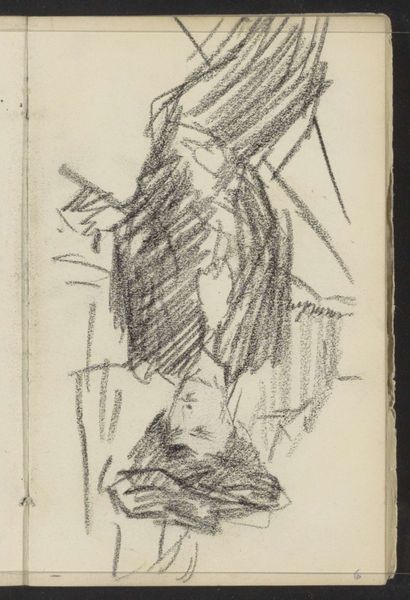
drawing, paper, pencil
#
portrait
#
drawing
#
paper
#
pencil
Copyright: Rijks Museum: Open Domain
Editor: This is "Portret van een vrouw met een hoed" – "Portrait of a Woman with a Hat" – from 1919, currently at the Rijksmuseum. It's a pencil drawing on paper. There's a rough, unfinished quality to it that I find quite appealing. What jumps out to you? Curator: Initially, the rapid, gestural quality of the pencil strokes commands attention. Notice how the artist employs hatching and cross-hatching to define form and create tonal variation, yet refrains from achieving a highly polished finish. This choice underscores the inherent qualities of the medium – pencil on paper – foregrounding process over illusionistic representation. What visual cues lead you to perceive this as "unfinished," and what significance do you attribute to that perception? Editor: I suppose the visible sketch lines, the lack of shading in areas, and the generally undefined forms contribute to that feeling. It seems more focused on capturing a fleeting impression rather than a detailed likeness. Curator: Precisely. Observe, too, the structural arrangement: the juxtaposition of angular shapes—particularly evident in the hat and collar—against the softer curves of the face. Does this interplay of geometric and organic forms suggest a specific reading to you? How does this visual dynamic shape your understanding of the portrait’s subject or intent? Editor: It could hint at a tension or contrast in the woman’s character, perhaps? Or even reflect a kind of modernist aesthetic, moving away from traditional portraiture? Curator: An insightful observation. The abstraction inherent in the sketch destabilizes conventional notions of resemblance, shifting the focus to the artwork's formal properties and conceptual framework. Does examining this piece through the lens of its constituent elements modify your initial impression? Editor: Definitely! I was drawn in by the feeling of incompleteness, but seeing the structure and composition reveals the intent behind the apparent spontaneity. Curator: Indeed. The artwork offers a valuable exercise in observing how line, form, and composition collectively shape our perceptual and interpretative experience.
Comments
No comments
Be the first to comment and join the conversation on the ultimate creative platform.
